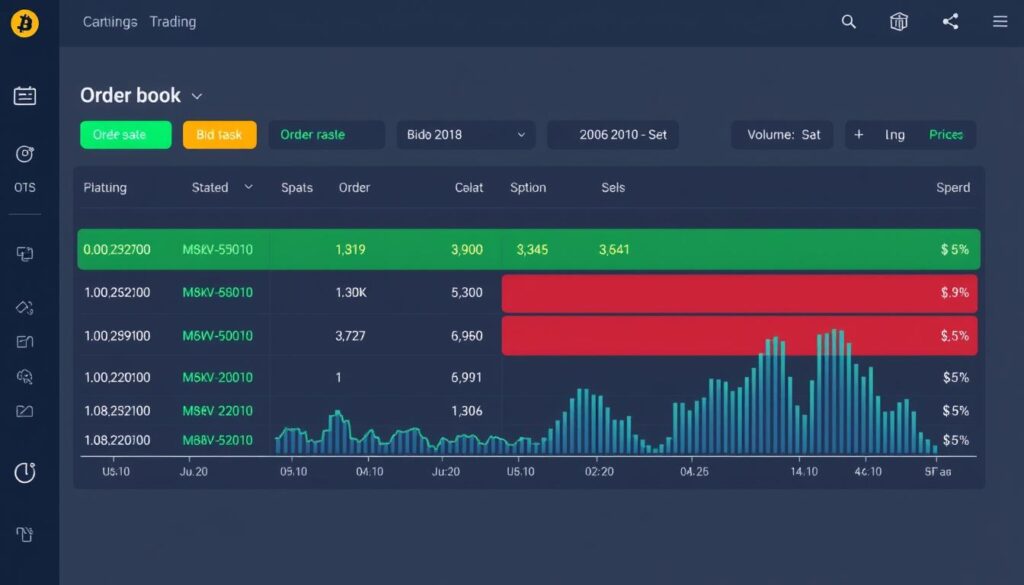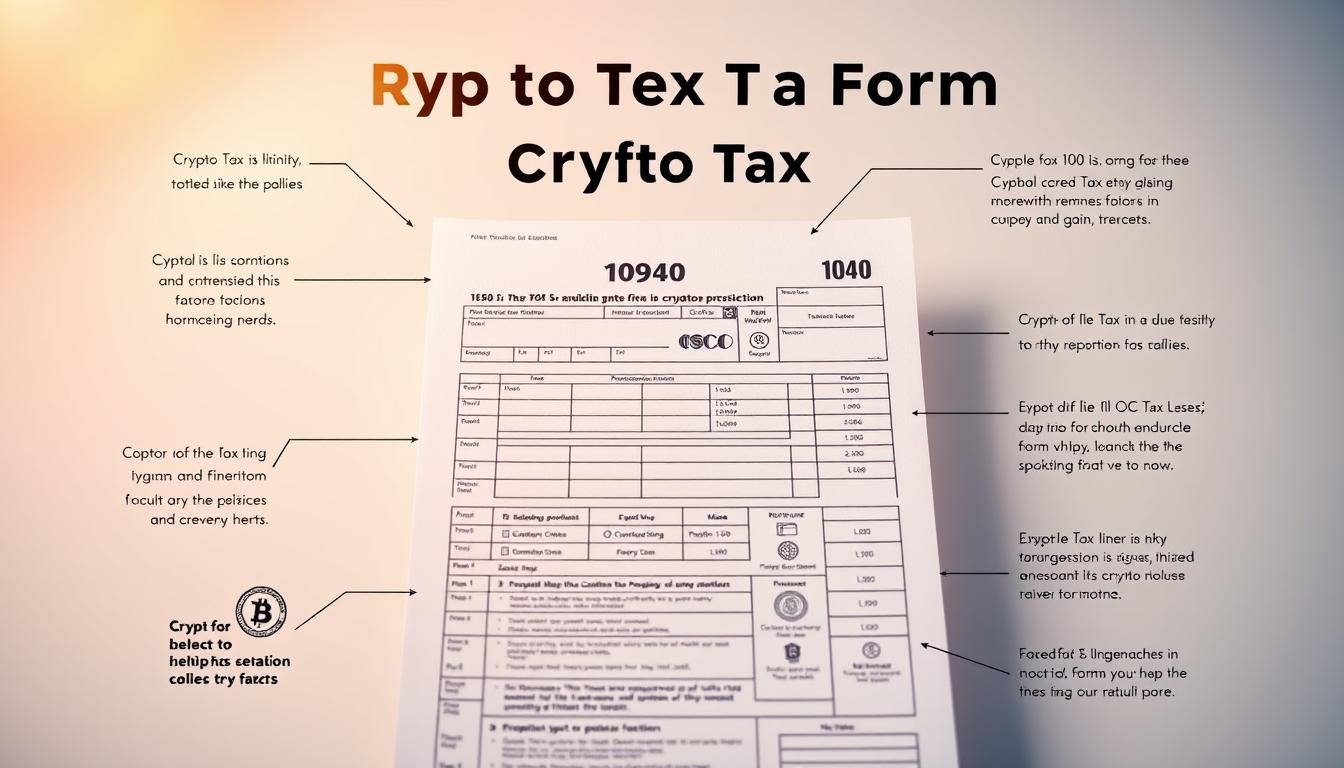Now Reading: Mastering Crypto Storage: A Guide to Hardware Wallets in the USA
- 01
Mastering Crypto Storage: A Guide to Hardware Wallets in the USA
Mastering Crypto Storage: A Guide to Hardware Wallets in the USA
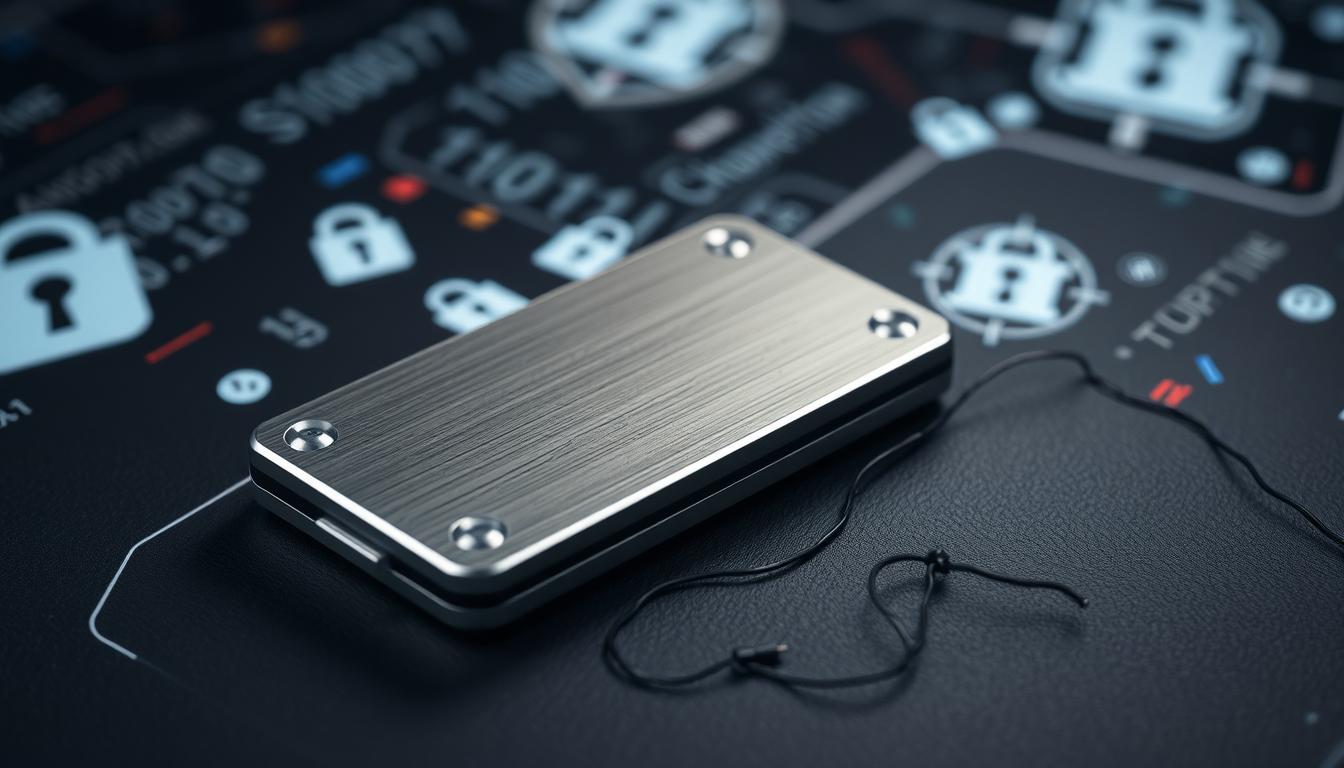
Cryptocurrency is becoming more popular in the United States. Keeping digital assets safe is now a top concern. Hardware wallets are the best way to store cryptocurrencies securely. They keep your private keys offline, away from hackers.
This guide will teach you how to use hardware wallets in the USA. It covers the special needs and rules for American users. With more cyberattacks and scams, picking the right storage is crucial to protect your money.
Whether you’re new to investing or have experience, knowing about hardware wallets is key. This guide explains how they protect your assets, how to set them up, and U.S. rules. You’ll see why cold storage is better than software wallets and how to stay safe without losing access.
Key Takeaways
- Hardware wallets are the leading secure crypto storage solutions for U.S. users.
- Offline storage reduces risks from hacking and malware common in online platforms.
- Proper setup and backup processes are vital for protecting investments.
- U.S. regulations and compliance play a key role in selecting storage options.
- Hardware wallets balance security and usability for all crypto holders.
Understanding Hardware Wallets and Their Critical Role in Crypto Security
Choosing the right storage method is key to keeping your cryptocurrency safe. Hardware wallets for cryptocurrency are the most secure way to store digital assets. They keep your private keys offline, away from online threats.
What Sets Hardware Wallets Apart from Software Alternatives
Software wallets are at risk because they run on devices connected to the internet. Hardware wallets, on the other hand, store keys in a separate device. This keeps your crypto safe even if your device is hacked.
Brands like Ledger and Trezor use special chips to store keys offline. This is a top recommendation for how to securely store crypto assets.
Why Cold Storage Provides Superior Protection
Cold storage, like hardware wallets, keeps your keys offline. This blocks malware and phishing attacks. It’s a method secure crypto storage solutions experts recommend to avoid cyber threats.
The Growing Importance of Secure Storage in the Evolving Crypto Landscape
As more people use cryptocurrency, threats like ransomware and exchange hacks rise. Hardware wallets offer strong security against these threats. They are essential in protecting your assets from hackers’ advanced tools.
The Evolution of Cryptocurrency Storage Solutions
At first, people stored cryptocurrencies in simple software wallets and exchanges. But, these were often hacked, showing big security gaps. The 2010 Mt. Gox disaster was a wake-up call for cryptocurrency storage best practices.
As hackers got smarter, so did the ways to store crypto. The late 2010s saw the first hardware wallets for cryptocurrency. These kept private keys safe from the internet.
By 2015, Ledger and Trezor became top choices. They used strong hardware and seed phrases to keep data safe. After big hacks, like the 2018 Coincheck loss of $532 million, they became even more popular.
Now, we see hardware wallets that work with many different cryptocurrencies. They also connect well with decentralized finance (DeFi) platforms. New features like multi-signature protocols and support for over 1,500 cryptocurrencies are making them even better. The future might bring biometric authentication and AI to keep them secure.
Key Benefits of Using Hardware Wallets for Your Crypto Portfolio
Hardware wallets offer top-notch protection for digital assets. They are key to managing crypto today. Their offline design keeps funds safe from cyber threats like phishing and malware. Let’s explore how they boost security and ease of use.
Protection Against Online Threats and Malware
One major benefit is air-gapped storage. This keeps private keys away from the internet. It stops viruses and hackers from getting in. Unlike software, hardware wallets naturally block malware.
Security During Transactions and Signing Operations
Every transaction needs a physical sign-off on the device. Users check details like amounts and addresses on the wallet’s screen. This stops hackers in their tracks, adding a crucial layer of security.
Recovery Options and Backup Capabilities
Seed phrases are like a safety net if your device gets lost or damaged. Top brands like Ledger and Trezor make sure these seeds are safe. It’s important to keep them in a secure place, like a fireproof safe or encrypted file.
Multi-Currency Support and Portfolio Management
Devices like the Ledger Nano X and Trezor Model T handle thousands of cryptocurrencies. They let you keep all your crypto in one safe spot. Plus, they have multi-signature features for extra control over big portfolios.
Top Hardware Wallet Options Available in the USA Market
When picking the best hardware wallets for crypto, look at features, security, and price. The USA has many options, with Ledger and Trezor at the top. Find the right one for your needs with these top picks.
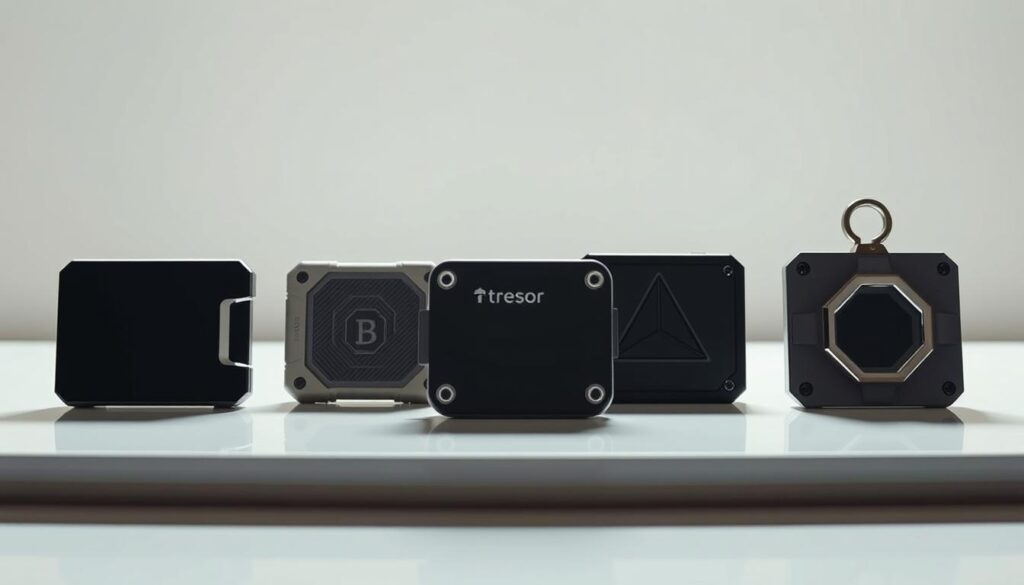
Ledger Product Line: Features and Pricing Comparison
The Ledger Nano S Plus costs $120 and has a color screen and Bluetooth. The Nano X, at $200, has more storage for apps. Both support over 5,000 cryptocurrencies but vary in connectivity.
Trezor Models: Strengths and Limitations
The Trezor Model One is affordable at $100 but has a simple design. The Model T, at $250, has a touch screen and PIN protection. It’s better for those who like advanced features.
KeepKey and Other Emerging Competitors
KeepKey is $100 and has a clear display and BIP-39 compliance. It lacks mobile app support. New brands like BitBox and Coolwallet are sleek but support fewer cryptocurrencies.
Budget-Friendly vs Premium Hardware Wallet Solutions
- Budget options: Nano S Plus and Trezor One offer basic security under $150.
- Premium choices: Ledger Nano X and Trezor T have advanced features like touch screens and more app storage for $200–$250.
- Key takeaway: High-value portfolios might benefit from premium wallets’ extra features.
Think about what you need versus the cost. Whether you’re on a budget or want the latest tech, these solutions keep your crypto safe offline.
How to Use Hardware Wallets for Crypto Storage in the USA
Protecting your digital assets starts with knowing how to use hardware wallets for crypto storage in the USA. This guide makes it easy, focusing on steps and tools specific to the US. First, pick a trusted brand like Ledger or Trezor. Make sure to buy from authorized sellers to avoid fake products.
Start by following the setup guide from the manufacturer. Open the box, check if it’s real on the official website, and make a recovery seed phrase. Keep this seed safe, away from your wallet. Also, set up PIN codes for extra security.
Link your wallet to safe platforms like Coinbase, Binance, or Gemini. Keep your wallet’s software up to date with firmware updates. Always be careful when using your wallet, especially on public networks. Always check transactions on your wallet’s screen before you confirm them.
- Use IRS-compliant tax tracking tools when transferring assets
- Store seed phrases in fireproof safes or bank vaults
- Avoid sharing recovery codes with third parties
In the US, you must follow IRS rules by reporting crypto transactions every year. Check if your wallet works with local exchanges and keep up with new rules. Test your backups with recovery seeds to prevent losing your money forever.
First-Time Setup: Initializing Your Hardware Wallet
Setting up your hardware wallet right is key to keeping your digital assets safe. This hardware wallet setup guide will help you avoid mistakes from the beginning.
Unboxing and Authenticity Verification Steps
- Look for unbroken security seals and official logos on the packaging.
- Go to the maker’s website to check firmware versions and device codes.
- Use special features like holograms or QR codes from brands like Ledger or Trezor.
Creating a New Wallet and Generating Recovery Seed
Your device will create a recovery seed during setup. This is a 12-24 word phrase. Write it down by hand in a safe place. Never type it on a computer or phone.
Keep the seed in a fireproof safe or spread it across different places for extra safety.
Setting Strong PINs and Passphrases
- Pick a unique 4-8 digit PIN that’s not linked to your birthday.
- Turn on passphrase protection (if it’s available) for more security. Use a strong, random phrase that’s not your seed.
- Don’t use the same PIN for other accounts to avoid security issues.
By following these crypto wallet security tips, you’ll start securely storing your crypto assets. Mistakes during setup can mean losing your money forever. Always double-check each step.
Connecting Your Hardware Wallet to Compatible Software Interfaces
Using secure crypto storage solutions means linking your hardware wallet to software. First, download the maker’s app, like Ledger Live or Trezor Suite. These apps help manage your funds and track transactions. For a hardware wallet setup guide, check the device’s manual for desktop or mobile setup.
- Use USB cables for desktop apps; mobile users check Bluetooth compatibility.
- Select software from trusted sources to avoid malware risks.
- Verify OS compatibility: Windows, macOS, or Linux support varies by model.
Connecting hardware wallets to third-party apps like MetaMask needs careful steps. Always turn on two-factor authentication during setup. Here’s how to connect safely:
- Install official drivers and software updates before linking devices.
- Approve transactions directly on the hardware wallet’s screen, never on external devices.
- Disable USB debugging modes to prevent unauthorized access.
To keep your how to use hardware wallets for crypto storage in the USA safe, update firmware often. Stay away from public networks to avoid phishing. Use verified apps to keep your private keys safe offline.
Managing Multiple Cryptocurrencies on a Single Device
Modern hardware wallets for cryptocurrency make it easy to store many digital assets safely. These devices handle Bitcoin, Ethereum, and more, even with small memory. First, install supported protocols through software like Ledger Live or Trezor Suite. This organizes your apps like a smartphone.
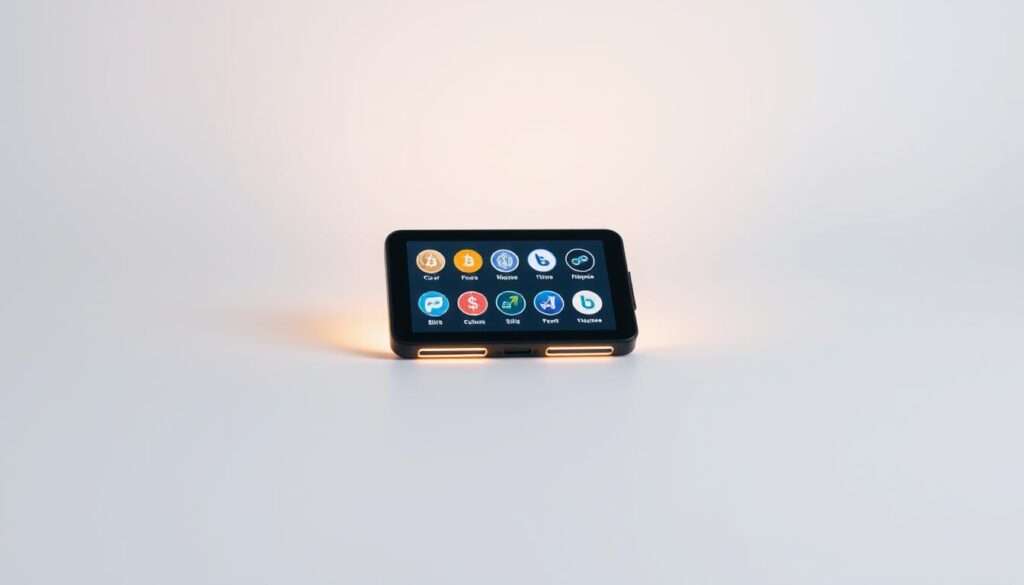
Adding Coins and Tokens Made Simple
- Access app stores in software like Trezor Suite to download blockchain-specific applications.
- Verify supported assets on wallet manufacturer websites to avoid compatibility issues.
- Use cryptocurrency storage best practices by separating sensitive seed phrases from connected devices.
Organizing Assets for Clarity
Use the wallet’s interface to label accounts clearly (e.g., “BTC Savings” or “ETH Trading”). Hide inactive accounts or mark favorites with star icons to keep views tidy. Always double-check addresses before transfers to prevent sending ADA to an ETH address.
Switching Networks with Caution
When moving between blockchains, confirm network settings match transaction destinations. Check fee structures in apps like the Ledger Live dashboard—some networks charge higher fees during peak times. Always research supported networks before buying new assets to avoid stranded funds.
Executing Secure Transactions With Your Hardware Wallet
When you send crypto, you need to confirm it physically. First, connect your device to a computer. Then, start the transfer through desktop software.
The wallet’s screen will show the recipient’s address, the amount, and fees. Always verify these details directly on the hardware wallet. This step helps avoid phishing scams and malware.
Users in the USA should also follow crypto wallet security tips. Check addresses with blockchain explorers before you confirm.
- Use hardware wallet benefits like Trezor’s “Show Address” feature to confirm details
- Disable internet or use a clean OS during high-value transfers
- Never approve transactions without reviewing the exact blockchain address
Ledger devices require physical confirmation at each step. This blocks remote hacks. Before you confirm, check amounts with tools like Etherscan.
Don’t reuse addresses for different transactions. Most wallets create new ones for privacy. Test small transfers first to get used to it without losing money.
Update your firmware regularly to keep your wallet secure. Always disconnect it after each use to reduce risk.
Even if your computer has malware, it can’t bypass the wallet’s physical check. Always verify every detail on the device itself. This is the heart of its security.
Backup and Recovery Protocols for Protecting Your Investments
Keeping your crypto safe is more than just a good wallet. How to securely store crypto assets means you need solid backup and recovery plans. Treat your seed phrase as your most important asset. Losing it could mean losing everything.
Seed phrase storage: Stay away from digital storage. Use physical methods like Cryptosteel or Coldbit metal plates. They resist damage well. Paper backups should be laminated and kept in waterproof places. Never put your seed phrase online or in emails. A crypto wallet security tip is to keep backups in different places to avoid loss.
- Test recovery processes with small test funds first
- Verify recovery by recreating a temporary wallet
- Use cryptocurrency storage best practices like Shamir’s Secret Sharing (Trezor Model T) for dividing seed data
Having multiple backups is key, but they must be safe. Use multisignature setups to avoid losing everything at once. For passing on your assets, mix encrypted documents with trusted people. Always check if your backups are up to date. Old backups can be as bad as no backups.
Advanced Security Features Worth Enabling
Hardware wallets have advanced features for extra security. These tools help protect your crypto assets with top-notch methods. For example, multi-signature setups need more than one device to confirm transactions, great for big portfolios.
Time-locked transactions delay transfers until a specific date. This keeps your funds safe from quick decisions or threats.
- Hidden wallets: Features like Trezor’s hidden wallet create secret storage spots. They offer protection during physical threats.
- BIP39 passphrases: Adding a “25th word” to recovery phrases makes separate wallet instances. This boosts security without changing seed phrases.
- Duress PINs: Some devices, like Ledger models, have secondary PINs. These can show fake balances to trick attackers.
- Air-gapped signing: Signing transactions offline stops internet hacking. This is a key benefit of hardware wallets.
Encryption and firmware updates also lower risks. But, using these tools wrong can lead to losing data. It’s important to test features like hidden wallets in safe environments first.
Choosing the right features for your needs makes them effective. This ensures your crypto is safe for the long term.
Avoiding Common Security Mistakes When Using Hardware Wallets
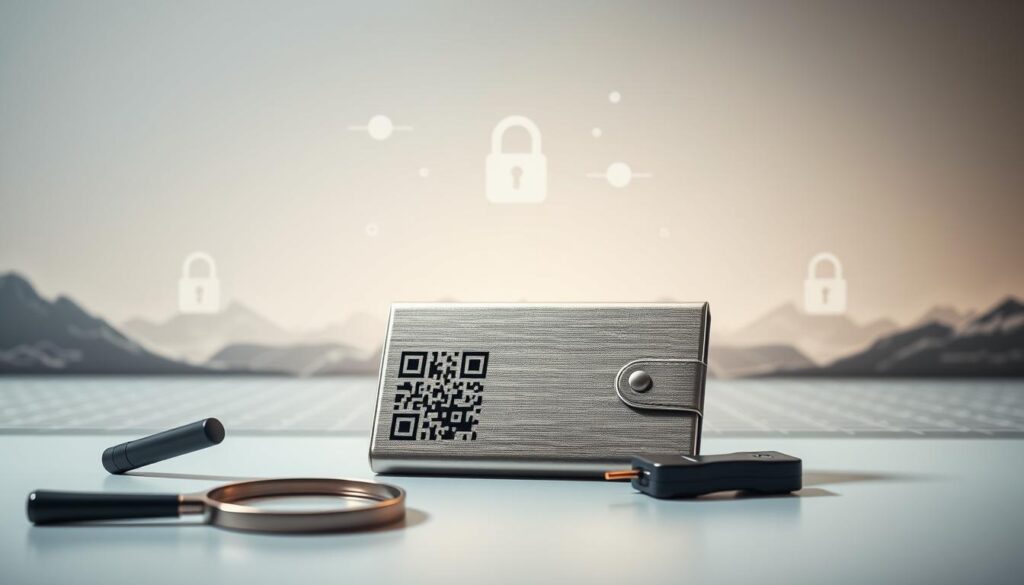
Keeping your crypto safe is more than just having a hardware wallet. Many security issues come from mistakes people make, not from the wallet itself. Here are some crypto wallet security tips to help you stay safe from common risks.
Buying from Unofficial Sellers Risks Compromised Devices
Buying from unauthorized sellers can lead to big problems. They might sell devices with malware or changed software. Always buy from secure crypto storage solutions makers like Ledger or Trezor. Make sure to check for official holograms and verify the firmware during setup. Buying from third-party sellers can expose you to tampered devices.
Guard Against Physical Theft and Unauthorized Access
- Store wallets in secure places like fireproof safes when not in use
- Enable anti-brute force PIN locks with auto-wipe features
- Use travel cases to prevent accidental damage during transit
Never leave devices alone in public. Treat them like you would cash.
Fighting Social Engineering Attacks
Attackers often use tricks to get what they want:
- Phishing emails that look like they’re from support teams
- Fake updates that ask for your seed phrase
- Deceptive QR codes that link to bad websites
Always check official sites and never share your seed phrase. Use cryptocurrency storage best practices like multi-factor authentication for recovery.
Troubleshooting Hardware Wallet Issues and Updates
Even with the right hardware wallet setup guide, problems can still happen. This section offers steps to fix common issues safely. These steps help keep your crypto secure in the USA and worldwide.
Addressing Connection Problems and Device Recognition Errors
Connection issues often have simple fixes. Here’s what to do:
- Try hardware wallets for cryptocurrency with different USB ports or cables. Use official accessories to avoid problems.
- Update device drivers on the manufacturer’s website. Check Ledger or Trezor support pages for guides.
- Restart your computer. Sometimes, a full reboot is needed for devices to be recognized.
Safely Installing Firmware Updates
Updates improve security but need care:
- Backup seed phrases before updating.
- Download updates only from official sites like Ledger Live or Trezor Suite.
- Follow guides carefully to avoid problems. Interrupted updates might need a factory reset.
What to Do When Your Device Malfunctions
If your device fails:
- Look for simple fixes like battery replacement or firmware reinstallation.
- Use the seed phrase to recover funds if the device can’t be fixed. Always keep recovery phrases offline.
- Contact customer support for warranty claims. Ledger and Trezor offer repair services for eligible devices.
Remember: Seed phrases ensure access even during hardware failure. Never share recovery details with third parties.
Compliance Considerations for USA-Based Crypto Holders
Using hardware wallets for cryptocurrency means you must follow U.S. financial rules. USA crypto storage solutions need to meet IRS standards, as crypto gains are taxed. You must report all transactions and keep detailed records to stay compliant.
Keep track of every transaction with your hardware wallet. The IRS wants you to use methods like FIFO or cost basis for capital gains. Cryptocurrency storage best practices include exporting your wallet’s history to platforms like CoinTracker or Koinly for tax reports.
- Report all crypto transactions by year-end using Form 1040 Schedule D
- Maintain backup seed phrases and PINs securely, but not with transaction data
- Verify state-specific rules: New York requires BitLicense for custodial services, while other states have no special crypto regulations
FATCA and FBAR rules kick in for crypto over $10,000 abroad. Estate planning must include legal documents for heirs to access assets without PINs/seeds. Always talk to a tax expert when using how to use hardware wallets for crypto storage in the USA to keep up with changing rules.
Integrating Hardware Wallets into Your Broader Financial Strategy
Managing crypto well is more than just keeping it safe. In the USA, the best hardware wallets for crypto storage help with more than just security. They offer benefits like offline storage and fit into estate planning, tax compliance, and managing liquidity.
Estate planning is all about being prepared. Multisignature arrangements with trusted advisors make sure heirs can access assets safely. Keeping recovery details with legal documents, like those from Ledger or Trezor, helps avoid problems. Now, there are even services for inheritance escrow for more control.
Tax reporting needs accurate records. Tools like CoinTracker work with hardware wallets to track transactions. It’s important to log every transfer and keep receipts. The IRS sees crypto as property, so keeping good records avoids penalties. Using tax software with hardware storage makes following the rules easier.
Managing a portfolio means using different levels of security. High-value assets are kept in cold storage, while everyday funds are in mobile apps. Now, you can even get IRAs linked to hardware devices, mixing traditional finance with crypto. How much you keep offline depends on your risk tolerance.
- Store recovery data in fireproof vaults alongside wills
- Use separate seed phrases for taxable vs. long-term holdings
- Test inheritance protocols annually with heirs
Integrating hardware wallets means keeping up with changing rules. US custodians now accept hardware wallet addresses for tax-advantaged accounts. Finding the right balance between access and security ensures your assets are safe but ready when needed. With the right strategy, hardware wallets become key parts of managing your wealth.
Securing Your Digital Future: Taking Control of Your Crypto Assets
Securing your crypto assets starts with the right tools. Hardware wallets are the most reliable for secure crypto storage solutions. They are perfect for both new and experienced users. Devices like the Ledger Nano X or Trezor Model T offer top-notch security.
These devices use physical security and advanced encryption. This ensures you keep control of your assets.
As technology advances, so do the challenges and opportunities in crypto security. Future threats like quantum computing require stronger algorithms in hardware wallets. Also, the rise of central bank digital currencies (CBDCs) may change how we store crypto.
Staying updated with providers like Ledger is key. This ensures you’re ready for these changes.
Beginners should research the best hardware wallets for crypto storage. They should also learn about recovery seed protocols. Experienced users can add multi-signature systems or explore interoperable platforms.
Regularly updating firmware and avoiding unauthorized sellers is crucial for all users.
Hardware wallets are more than tools—they’re gateways to self-custody in a decentralized future. By focusing on security, you protect your investments and prepare for digital finance innovations. Choose a device, follow best practices, and stay vigilant to protect your digital assets for years to come.
FAQ
What are hardware wallets for cryptocurrency?
Hardware wallets are physical devices for safely storing your cryptocurrency offline. They are different from software wallets, which are online. Hardware wallets protect your private keys from online threats, making them a top choice for secure crypto storage.
How do I use hardware wallets for crypto storage in the USA?
To use hardware wallets in the USA, first pick a trusted brand like Ledger or Trezor. Buy the device from approved sellers. Then, follow the setup guide and use compatible software for secure transactions. Remember to follow USA crypto laws and regulations.
What are the best hardware wallets for crypto storage?
Top choices in the USA include Ledger Nano X, Trezor Model T, and KeepKey. These wallets offer strong security, easy use, and support many cryptocurrencies. They’re great for both new and seasoned investors.
What are the benefits of using hardware wallets?
Hardware wallets boost security, let you verify transactions safely, and offer recovery options. They also support many cryptocurrencies for easy portfolio management. They give crypto investors peace of mind about their assets’ safety.
How can I securely store crypto assets?
Store crypto assets in a hardware wallet for offline safety. Use strong PINs or passphrases and update your wallet’s firmware regularly. Also, have a solid recovery plan and follow best practices like avoiding public Wi-Fi during transactions.
What security tips should I follow when using a hardware wallet?
Buy your wallet from trusted sellers, update firmware often, and set it up in a secure place. Back up your recovery phrase in safe places and be careful of social engineering attacks.
How do I troubleshoot hardware wallet issues?
Check USB connections if your device isn’t seen, and make sure firmware is current. Look at the manufacturer’s troubleshooting guides. If it breaks, check warranties or use recovery phrases for a new wallet.
What compliance considerations should I keep in mind as a USA-based crypto holder?
As a USA crypto holder, know IRS rules for reporting crypto transactions. Keep detailed records and understand the Bank Secrecy Act. Always talk to a tax expert to stay up to date with laws.



